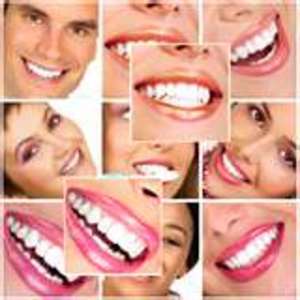Since 2000 BC white teeth have been the mark of beauty and a sign of wealth. Not unlike our ancestors, we share this vain ideology that a sparkling smile will make us more beautiful, more attractive and more valuable. Teeth whitening has only appeared within the main stream about two decades ago even though it has been around for thousands of years. Primarily only applied by dentists, teeth whitening much like many other cosmetic and beauty procedures has exploded onto the do-it-yourself and at-home scene. Like so many of its predecessors, teeth whitening done by a professional initially was very expensive and is still the most expensive way to whiten your teeth. Due to its costliness, manufacturers developed bleaching strips, bleaching pens, bleaching gels, teeth whitening kits, whitening trays, brush on whiteners, and whitening toothpastes. With so much variety in bleaching your teeth, how do you choose which to use and is it even safe?
The Egyptians were said to be the first to use toothpaste, which helped to whiten their teeth in 2000 BC. Although dentistry as a whole progressed with the invention of toothbrushes and toothpaste it wasn’t until the 17th century that teeth whitening reappeared within mainstream society. Back then barbers were also dental surgeons. To whiten teeth they would file down the outside of the teeth, which ended up removing the enamel and then dab on nitric acid to bleach the dentin. Although this was an effective method to whiten the appearance of teeth, it was very dangerous because without the enamel teeth were left exposed to bacteria and germs. This type of teeth whitening continued into the 18th century until fluoride was discovered in 1802 to help keep teeth healthy and cavity free. Although an exceptional discovery, which is still used in today’s dentistry, it was later found out that fluoride in high doses or if ingested could cause yellow or brown stains on teeth. In the late 19th century oxalic acid and then hydrogen peroxide were used to whiten teeth. It is these first uses that lead to the beginning of the dental bleaching trend. By the late 20th century teeth whitening was being done in dental offices. By the early 1990’s dental whitening swept through Hollywood, making it one more thing to idolize movie stars for. Now anyone can whiten his or her teeth, either at home, at the dentist or at a salon. Cost and effectiveness depends upon where you have it done and the quality of the whitening agents.
Teeth whitening or dental bleaching has become the most popular procedure for dentistry and cosmetic dentistry. It is recommended to see your dentist before you do any type of whitening or bleaching procedure to determine the density and sensitivity of your teeth. As we age, just like every other part of our body, our teeth start to decay; we lose enamel and the density of our teeth decreases. This affects the coloring of our teeth. However, other things also can affect the color of our teeth such as bacteria, foods such as coffee, tea, and red wine, tobacco and some antibiotics such as tetracycline. Additionally, adult teeth are not as white as baby teeth generally because the enamel becomes less porous as the mineral structure changes from its environment. If the dentin, the layer beneath the enamel becomes discolored it may take longer periods of bleaching or internal bleaching to whiten.
There are several ways to whiten your teeth in office with a dentist or cosmetic dentist, at home, over the counter or non-dental at a spa, salon or clinic. Products range from whitening strips, pens, and gels, which use hydrogen peroxide or carbamide peroxide to laser bleaching and power bleaching which uses light energy such as halogen, LED or plasma. Effectiveness is dependent upon the concentration of the oxidizing agent, which ranges from high (dental office) to low (over the counter). Some see immediate results where others it may take several sessions to notice any changes. Although teeth whitening is a relatively safe procedure there are some side effects that you should be aware of before receiving any treatments. Chemical burns to the gums and soft tissue of the mouth, teeth sensitivity, pain, over bleaching (too white almost iridescent colored teeth), rebound (whitening effect fades quickly after the procedure is done) and receding gums. By properly evaluating the risks and the outcomes, you can make a better decision on whether that brilliant smile is worth it. Otherwise there are always natural ways to get the same outcome!
Sarah Labdar, “Effective Ways to Whiten Your Teeth”, Everyday Health



